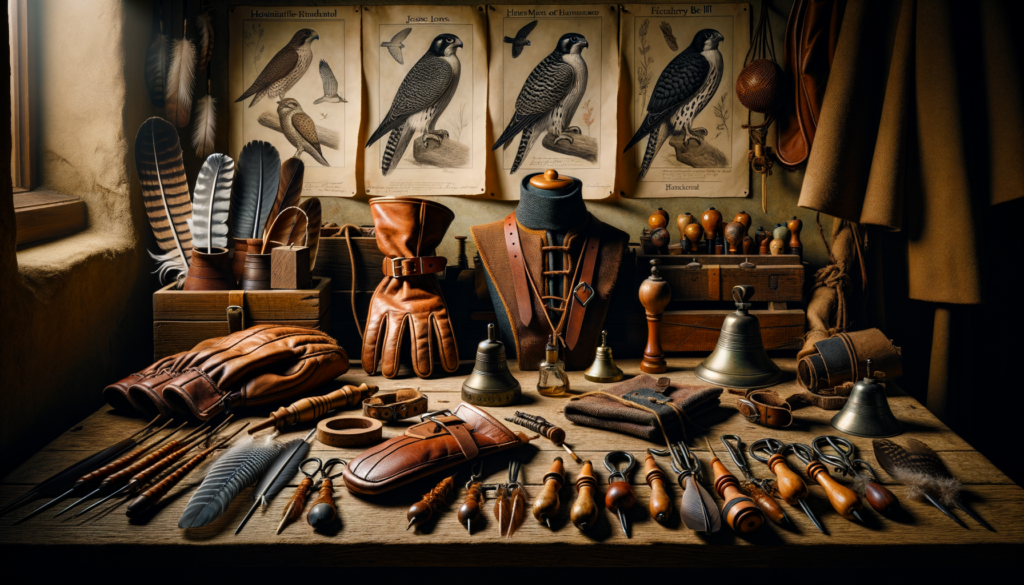Positive Reinforcement Techniques in Falconry
- Building Trust: Using positive reinforcement helps build a trusting relationship between you and your bird.
- Rewarding Good Behavior: Birds are given rewards, like treats or praise, for showing desired behaviors.
- Consistency Matters: Consistent use of positive reinforcement helps birds understand what is expected of them.
- Immediate Rewards: Birds need to be rewarded right after they do something good so they connect the reward with the action.
- Shaping Behavior: Start with simple behaviors and gradually reward more complex actions as the bird learns.
- Non-Food Rewards: Besides treats, other rewards like petting or playing can be effective.
- Avoiding Punishment: Instead of punishing bad behavior, focus on encouraging good behavior through rewards.
- Patience is Key: Training using positive reinforcement can take time, so patience is crucial.
- Improved Well-being: Birds trained with positive reinforcement tend to be happier and more willing to learn.
By understanding and applying these techniques, training your bird can become a fun and rewarding experience for both of you.
Discovering the Magic of Positive Reinforcement Techniques in Falconry
Imagine you’re in the lush, rolling hills of Ireland, where sheepdogs expertly herd flocks with just a few whistles and commands. These skilled dogs don’t just understand what to do instantly’they’ve been trained with patience, praise, and the occasional treat. Now, think about how this relates to falconry. Just like those sheepdogs, birds of prey can learn through positive reinforcement techniques, and that’s exactly what we’re delving into today.
Welcome to Learn Falconry! We’re here to make your journey into the ancient art of falconry both fun and rewarding. Positive reinforcement is more than just a training method; it’s a way to build a trusting relationship with your bird. Imagine training your falcon, knowing that each successful step is met with a reward that both you and your bird will appreciate.
In this article, we’ll explore the ins and outs of positive reinforcement and why it’s so crucial for training your majestic feathered friend. Stick with us to learn how this technique not only helps in training but also strengthens the bond between you and your raptor. Ready to take flight? Keep reading to discover how positive reinforcement techniques can transform your falconry experience!
Positive Reinforcement Techniques in Falconry
Positive Reinforcement in Falcon Training
Understanding how to train a falcon using positive reinforcement is key to successful falconry. Positive reinforcement falconry is a method where falconers reward their birds for desired behaviors, encouraging them to repeat those actions. This way, falcons learn what is expected of them in a friendly and stress-free environment.
The Basics of Reward-Based Falcon Training
Reward-based falcon training is a straightforward yet effective technique. When a falcon performs a desired behavior, such as returning to its perch or flying to the falconer’s glove, it receives a reward. The reward can be in the form of food, which is the most common preference due to the falcon’s natural hunting instincts.
For example, when a falcon flies to you upon recall, offering it a small piece of meat reinforces this action. Over time, the bird associates this behavior with positive outcomes. It’s a powerful way to train because it builds trust and fosters a cooperative relationship between the falconer and the bird.
For a deeper dive into how trust and cooperation have shaped falconry throughout history, check out our detailed history of falconry.
Implementing Positive Training Methods
Using positive training methods in falconry involves consistency and patience. It’s essential always to reward good behavior immediately to strengthen the association. Here are some practical tips to get you started:
- Immediate Rewards: Immediately give a treat when your falcon performs an action correctly. This prompt response is crucial for the bird to connect its action with the reward.
- Small Steps: Break down training into small, manageable steps. For instance, start with getting the falcon comfortable with basic commands before moving on to more complex tasks.
- Gradual Progression: Gradually increase the difficulty of tasks. Begin with training sessions on the perch before advancing to free-flight exercises.
The Role of Equipment in Positive Reinforcement
Having the right equipment is essential for effective training. Things like perches, gloves, and lures play a significant role. Each piece of equipment should be introduced gradually and associated with positive experiences. For more information about falconry gear, visit our comprehensive guide on falconry equipment.
Training Specific Falcon Species
Different species of falcons may respond differently to positive reinforcement. For example, the training approach for a Peregrine Falcon might vary slightly from that for an American Kestrel. Tailoring your training methods to the specific needs and reactions of your falcon can yield better results. Explore more about various species of falcons and their unique traits.
Advanced Positive Reinforcement Techniques
Once you and your falcon have mastered basic commands and behaviors, you can advance to more complex training sessions. Techniques such as clicker training can be introduced, where a clicker sound is paired with rewards to signal correct behavior. This method enhances communication between you and your bird.
For those interested in diving deeper into advanced methods, we have extensive resources on advanced falconry techniques.
Using positive reinforcement techniques in falconry not only makes the training process enjoyable for both the falcon and the falconer but also ensures strong, cooperative bonds. Happy and motivated falcons are more likely to excel in any task, from basic recall to complex hunting strategies.
To learn more about these techniques and how you can implement them with your own falcon, visit our training a falcon section for in-depth guides and helpful tips.
Positive Reinforcement Techniques in Falconry: A Deep Dive
Food-Based Training
Positive reinforcement in falconry is primarily centered around food-based training. Falcons are motivated by food, which is used as a reward when they perform desired behaviors or successfully return to the falconer. For example, during training, a falcon may be called back to the falconer and given a piece of meat as a reward. This method strengthens the association between the desired behavior and the reward.
Daily Care and Attention
Daily care plays a crucial role in building trust and respect between the falconer and the bird. This involves ensuring the falcon has a healthy diet, ample exercise, and proper living conditions. When falconers dedicate time to the daily care of their birds, it fosters familiarity and trust. For instance, regular feeding schedules and close interaction help the falcon feel more comfortable and secure with the falconer.
Respect and Trust
Building a strong bond based on respect and trust is key in falconry. Falcons, being highly intelligent creatures, can perceive when they are treated with dignity and kindness. Treating the birds respectfully not only makes them more likely to cooperate but also enhances their overall well-being. A kind approach to handling and training helps develop a deep mutual understanding between the falcon and the falconer.
Positive Reinforcement Techniques
Using positive reinforcement, falconers reward good behavior with food, which is preferable to negative reinforcement that involves punishment. Positive techniques are beneficial in maintaining a falcon’s natural instincts without creating dependency on humans or leading to behavioral issues. For example, if a falcon successfully hunts and returns, it is rewarded, making it more likely to repeat the behavior.
Falconer-Bird Bonding
The relationship between the falconer and the bird is essential for successful training and hunting. Consistent use of positive reinforcement, daily care, and respect helps in strengthening this bond. A strong bond ensures that the bird trusts the falconer and follows commands effectively. An example of this is the consistency in rewarding the bird for returning, which fosters a reliable partnership.
Raptor Mortality
In the wild, raptors face high mortality rates, with studies indicating that 75-80% of immature wild raptors die each year. Falconry helps mitigate these rates by providing a safe environment where young birds can be trained and cared for. Once they are mature and well-trained, they can be released back into the wild, contributing to the population and survival of these species.
Data on Positive Reinforcement Effectiveness
The effectiveness of positive reinforcement techniques is well-documented through data and studies. Below is a table summarizing the impacts:
| Technique | Impact | Example |
|---|---|---|
| Food-Based Training | Increases return rate and trust | Falcon returning for food reward |
| Daily Care | Enhances health and bonding | Regular feeding and exercise routines |
| Respect and Trust | Improves cooperation and behavior | Gentle handling and kind interactions |
| Positive Reinforcement | Reduces dependency and behavioral issues | Rewarding desired behaviors consistently |
| Falconer-Bird Bonding | Strengthens partnership and command following | Consistent positive interactions and training |
| Raptor Mortality Reduction | Enhances young raptor survival rates | Providing a safe training environment for young raptors |
These points highlight the importance of using positive reinforcement techniques in falconry and the beneficial impacts they have on both the falconer and the bird.
Final Thoughts on Positive Reinforcement in Falconry
Positive reinforcement is an essential aspect of falconry in 2024, playing a crucial role in building trust and respect between the falconer and the bird. Here are the most critical points:
- Food-based Training: Using food rewards as the primary motivator encourages desired behaviors and helps the bird return to the falconer.
- Daily Care and Attention: Consistent care, including a healthy diet, exercise, and proper housing, fosters a strong bond between the falconer and the bird.
- Building Respect and Trust: Treating birds with dignity and kindness is fundamental in establishing a respectful relationship.
- Effective Training Techniques: Rewarding good behavior with food avoids behavioral issues, fostering independence without negative consequences.
- Falconer-Bird Bonding: Regular positive reinforcement and respect are key to successful hunting partnerships.
- Conservation Benefits: Falconry aids in increasing raptor populations by providing safe environments and training for young birds.
In the end, focusing on positive reinforcement not only ensures the well-being of the birds but also strengthens the unique and rewarding bond between the falconer and their falcon.



